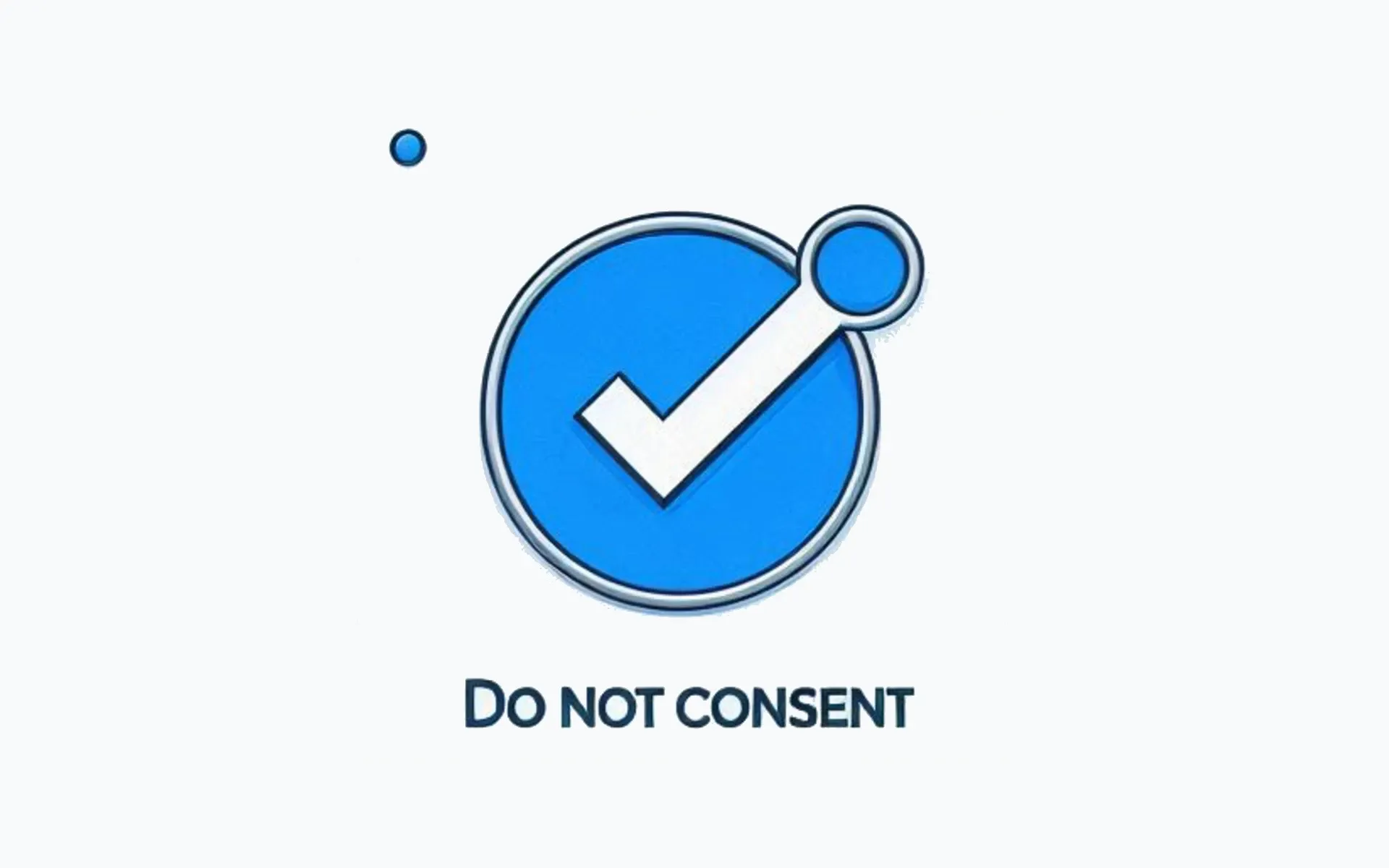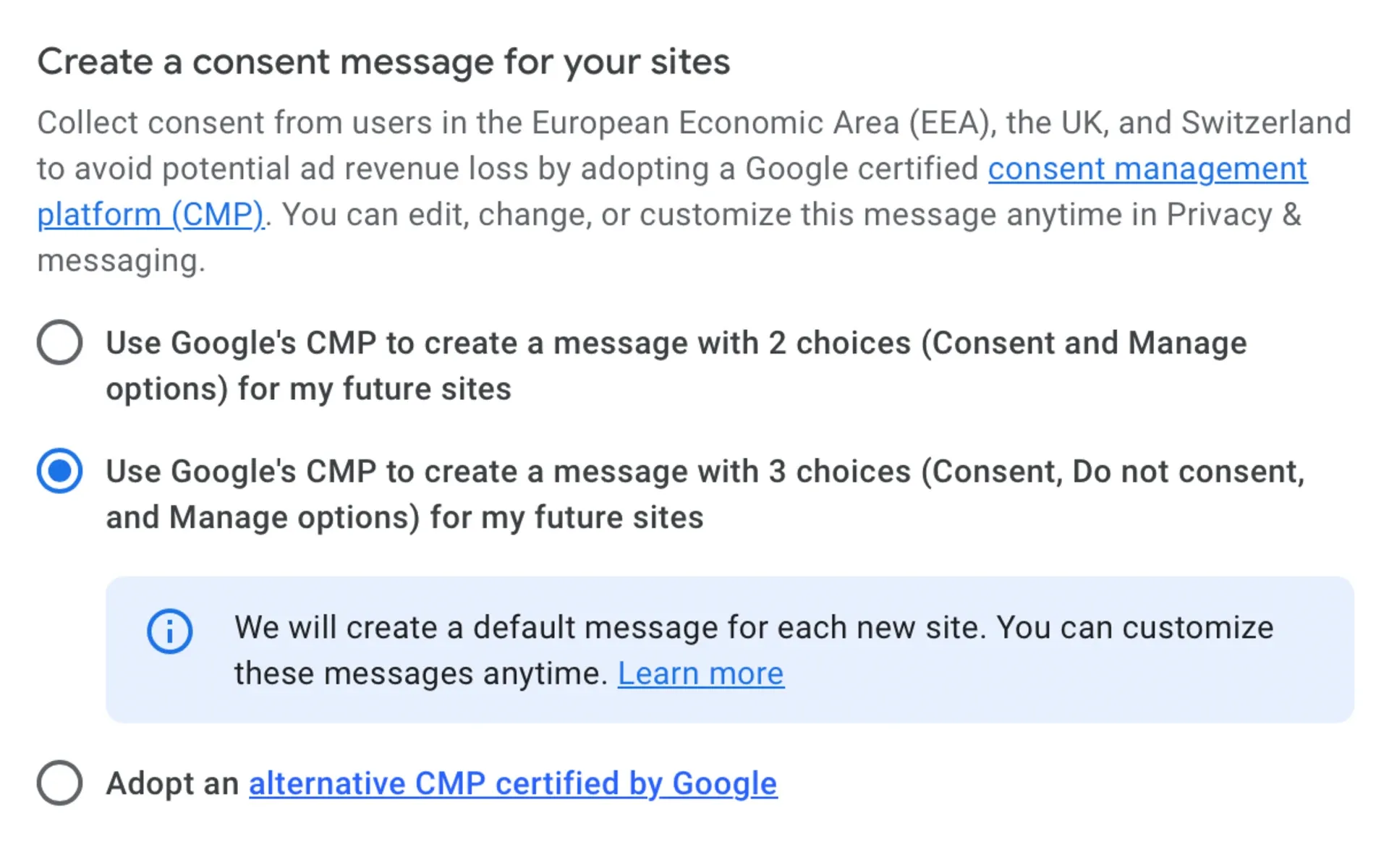European consent messages get flexible country controls in Adsense update
Google updates AdSense privacy controls with country-specific consent message options for European publishers.

Three days ago, on January 30, 2025, Google introduced significant changes to its AdSense platform's privacy and messaging capabilities for European publishers. According to Google's official documentation, the update enables publishers to configure consent messages differently across European Economic Area countries and the UK.
Under Google's EU user consent policy, publishers must obtain explicit user consent for data collection and ad personalization in compliance with the General Data Protection Regulation (GDPR) and the EU ePrivacy Directive. The technical implementation supports both the IAB Transparency and Consent Framework v2.2 specification and Google's Additional Consent protocol.
The most notable change in this update is the ability to show or hide the "Do not consent" button on a per-country basis. According to Google's announcement, messages without this button have demonstrated higher consent rates, though specific percentages were not disclosed.
The system architecture now includes multiple screens that appear based on user interactions. The main consent page presents users with configuration options that vary between two and three buttons. In the three-button configuration, users see "Do not consent," "Consent," and "Manage options." The two-button variant displays only "Manage options" and "Consent."

Publishers integrating these consent mechanisms must follow strict technical requirements. The IAB framework mandates that all purposes must be deselected by default when users access the "Manage your data" screen. This screen lists specific purposes for which publishers request consent or claim legitimate interest.
The vendor preferences section allows users to select specific ad partners for data sharing. This granular control aligns with GDPR requirements for explicit, purpose-specific consent. The technical implementation transmits consent decisions to vendors through two channels: the IAB TCF framework for registered vendors and Google's Additional Consent specification for non-registered partners.
For publishers managing their own data usage, the system supports establishing transparency and consent for IAB TCF data purposes. These can be configured with either consent or legitimate interest as the legal basis. When users want to revoke consent, the system defaults to showing the three-button interface, regardless of previous configurations.
The technical architecture includes several key components. The main consent page displays the site's logo and primary consent options. The "Manage your data" screen presents granular purpose selection. The "Confirm our vendors" screen lists ad technology partners and consent options.
Integration with Google's Ad Tech Providers list enables consent propagation for companies not registered with the IAB Europe Global Vendor List. This addresses a technical gap in the consent ecosystem, allowing publishers to maintain compliance while working with diverse advertising partners.
For implementation verification, publishers must ensure their messages meet legal requirements across jurisdictions. The system supports the Digital Services Act requirements, though specific details of this compliance were not included in the announcement.
The timing of this release, early in 2025, suggests Google's continued focus on privacy compliance tools. This update represents a technical response to the complex regulatory environment in European digital advertising, providing publishers with more granular controls while maintaining compliance with evolving privacy standards.
The architecture's support for both the IAB TCF specification and Additional Consent protocol demonstrates the technical complexity of modern privacy compliance. Publishers must navigate multiple consent frameworks while maintaining user experience and regulatory compliance across different European jurisdictions.
According to the Interactive Advertising Bureau's technical framework documentation and industry data, online publishers face significant revenue implications when users reject ad technology vendors' consent requests.
Publishers earn substantially less from non-personalized advertising compared to targeted ads, as contextual-only advertising typically generates lower CPMs (cost per thousand impressions).
The ability to configure consent interfaces on a country-by-country basis allows publishers to optimize their approach based on local regulations and user preferences while maintaining compliance with privacy laws. Data from major advertising platforms indicates that personalized ads can deliver 50-70% higher revenue than non-personalized alternatives.
This differential explains why publishers carefully consider the presentation and structure of consent interfaces - they must balance user privacy rights and regulatory compliance with their business sustainability.

